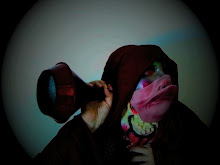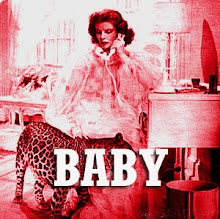my grandfather who was Irish played these and other's like them, on his mouth for me, when I was a wee lassy...
1. Audrey Saint-Coeur, Diddlage 0:33


2. John MacDonald, Strathspey | The Reel Of Tulloch 0:48


3. Yann-Fanch Kemener, Marie Louise (excerpt) 2:29


4. Tommy Gunn, Lilting With Fiddle, Guitar And Bones 0:52


5. Gordon Easton, The Drunken Piper 0:42


6. Josie McDermott, The Collier's Reel 1:00


7. Tim Lyons, Within A Mile Of Dublin 1:30


8. Paddy Tunney, Scots Bagpipe Lilts 1:00


9. Annie Johnston, Bird Imitations 1:26


10. Les Charbonniers de l'Enfer, La Luette En Colere (The Angry Uvula) 1:59


11. Frank Quinn, The Four Courts Reel 2:51


Celtic Mouth Music (puirt-a-beul)
a.k.a. diddling, lilting, jigging, chin music, cheek music, etc.
"Puirt-a-beul (= mouth music) are lyrics written primarily for dancing to. Consequently the lyrics are only of secondary importance – the rhythm in the song is the most important aspect and the rhythm takes precedence over the rhythm and stresses of the Gaelic. The lyrics in puirt (plural of the word port = dance tune) are generally meaningless or nonsensical. Many Gaelic singers therefore do not believe in publishing translations of puirt-a-beul. … The origins of puirt are unclear and may have resulted from the banning of pipes after the 1745 uprising, or the religious opposition to musical instruments (at its height in the mid-19th century). It is important to realise how interwoven is with both fiddling and various forms of dance – the song, tune and dance all go together as an entity. … In Cape Breton there is a dance and puirt about a loom weaving. In this dance, the dancers are squatted or crouched and leap up to simulate the rise and fall of the harnesses on the loom, whilst others weave in and out to indicate the shuttle flying back and forth. In Cape Breton also, people perform step dances around a row of lighted candles, which they extinguish one by one with the soles of their feet while dancing." (Craig Cockburn, Article on Gaelic puirt-a-beul for The Adult Learning Project, Scots Music Group)
further notes.
1"Diddlage": Recorded in Néguac, New Brunswick, in 1976. 2. "Strathspey" / "The Reel of Tulloch" : Recorded circa 1935 in Scotland. MacDonald sometimes diddled with a goat bell and a rattle. 3. "Marie Louise": Recorded 1977 in Brittany. An example of kan ha diskan (call-and-response singing). "The principle of kan ha diskan is simple: one of the executors, the kaner, reveals the first phrase. The second, or diskaner, sings the end of it with him, at least the very last notes, then repeats the entire phrase along. The first singer joins him on the last notes, then continues the next phrase alone. Until the end of the song, each sings thus turn by turn, the ends of the phrases being always said à deux. Whence a continuous unfolding, with a succession of reinforcements and diminutions of sound." (Jean-Michel Guildher, Le tradition populaire de danse en Basse-Bretagne) 4. "Lilting with Fiddle, Guitar and Bones": Recorded 1980 in Belfast. 5. "The Drunken Piper": Recorded 1980 in Scotland. "Up here in the northeast, they used tae supply the fiddle and melodeon players wi’ a dram o’ whiskey to get the best oot o’ them for the entertainment. The bottle wis put on a table, the glass set aside it, and ‘help yourself.’ But – the greedy divils – help themselves they did! They had to get someone to diddle and keep the music going till they revived." (Gordon Easton) "Easton kicks off this march in a deceptively simple manner, setting out the melody and introducing changes in the crisp northeast Scots fiddle style. Each new decoration is a minimalist delight, with Easton’s artistry becoming more apparent as he progresses." 6. Josie McDermott, "The Collier's Reel": from Ireland (Sligo) in 1976. 7. Tim Lyons, "Within A Mile Of Dublin": recorded 1978 in Washington, D.C. 8. Paddy Tunney, "Scots Bagpipe Lilts," recorded in 1952: An Irish style of lilting called "cantering," with a reference to piping like that in strict Gaelic canntaireachd (the practice of orally depicting and teaching the various moves in traditional bagpipe music). 9. Annie Johnston, Bird Imitations: Recording made by Alan Lomax on Barra in 1951. The album notes read: "Each of these jewels of mouth music sketches the briefest of stories in the voice of a bird. The birds include – as edited here – a grouse, a black-backed and an ordinary crow, a rook, a chicken, a puffin, a razorbill, some thrushes, and a seagull. ‘Lie down, sleep,’ the grouse tells her young, ‘you won’t get any more food until the morning.’ The crow sings to the crab: ‘Come out while I shape a red coat for you!’ eager to dash the crustacean against the rocks and get at its meaty insides. ‘I’ve lay two eggs,’ the rook brags. ‘I lay two eggs every day,’ the chicken retorts. The puffin and razorbill are enticing their young to fly. ‘Here I am at the edge of the sea,’ says one bird, ‘and I can’t swim a stroke!’" 10. Les Charbonniers de l'Enfer (Hell’s Coalmen), "La Luette En Colère" (The Angry Uvula) – a Quebecois performance group, recorded 1996. "We gathered around a table and started to sing. … We never talk about whether we’re doing something special – our sound is 98 percent accidents!" 11. Frank Quinn, "The Four Courts Reel": recorded February 1924 in New York City for Gennett Records ethnic series. Quinn, an Irish-born New York policeman, "unleashes cascades of stunning triplets, accompanying himself on accordion." The longest section of Irish lilting on a 78-rpm record.
[These and other notes, as well as the recordings, are from Celtic Mouth Music, Ellipsis Arts, 1997.]
![]()
![]()
![]()
![]()
![]()
![]()
![]()
![]()
![]()
![]()
![]()
![]()
![]()
![]()
![]()
![]()
![]()
![]()
![]()
![]()
![]()
![]()













No comments:
Post a Comment